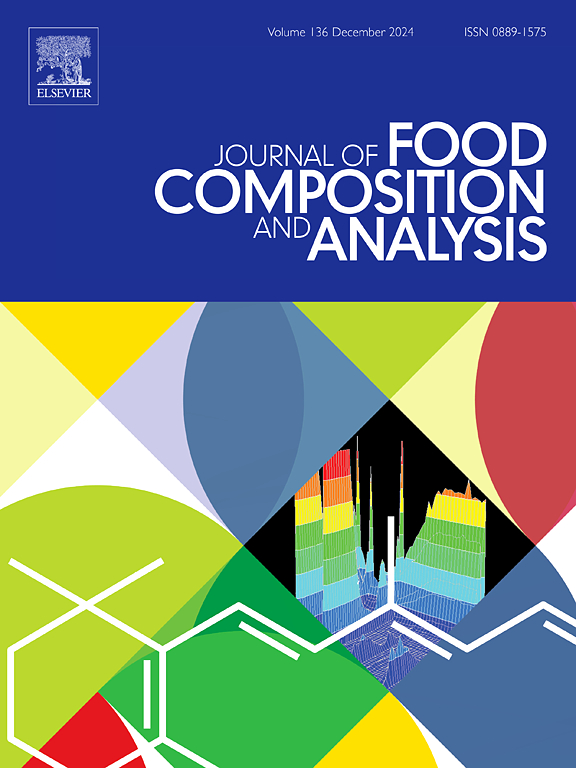A comparative study on magnetic solid phase extraction and magnetic colloidal gel based-dispersive solid phase extraction methods for preconcentration of carmoisine (E 122) in food samples
IF 4
2区 农林科学
Q2 CHEMISTRY, APPLIED
引用次数: 0
Abstract
Magnetic solid phase extraction (M-SPE) and magnetic colloidal gel based-dispersive solid phase extraction (MCG-dSPE) methods have been developed with the Fe3O4@XAD-16 magnetic nanoparticle for preconcentration carmosine in some food samples. The effects of some parameters on preconcentration of carmoisine were investigated such as pH, amount of magnetic nanoparticle, volume of deep eutectic solvent (DES), type of desorption solvent, vortex time (for adsorption and desorption), sample volume and extraction time for both methods. Then, the recovery results of carmoisine for both methods were compared and satisfactory recoveries were obtained from the MCG-dSPE method. Under the optimum conditions for the MCG-dSPE method, the limit of detection (LOD) and limit of quantification (LOQ), preconcentration factor (PF) and enhancement factor (EF) were calculated as 0.86 µg L−1 and 2.89 µg L−1, 100, 103, respectively. All results showed that the developed method is a fast and good technique that can be applied to real samples for the determination of carmoisine.
磁性固相萃取法与磁性胶体凝胶-分散固相萃取法在食品样品中卡莫辛(e122)预富集中的比较研究
磁固相萃取(M-SPE)和磁胶体凝胶-分散固相萃取(MCG-dSPE)方法是利用Fe3O4@XAD-16磁性纳米颗粒预先富集食品样品中的胭脂红的两种方法。考察了pH、磁性纳米粒子用量、深度共晶溶剂(DES)体积、解吸溶剂类型、涡旋时间(吸附和解吸)、样品体积和两种方法的萃取时间等参数对卡莫辛预富集的影响。比较了两种方法对卡莫辛的回收率,结果表明MCG-dSPE法对卡莫辛回收率满意。在最佳条件下,MCG-dSPE法的检出限(LOD)和定量限(LOQ)、富集因子(PF)和增强因子(EF)分别为0.86 µg L−1和2.89 µg L−1、100、103。结果表明,该方法快速、简便,可用于实际样品中卡莫辛的测定。
本文章由计算机程序翻译,如有差异,请以英文原文为准。
求助全文
约1分钟内获得全文
求助全文
来源期刊

Journal of Food Composition and Analysis
工程技术-食品科技
CiteScore
6.20
自引率
11.60%
发文量
601
审稿时长
53 days
期刊介绍:
The Journal of Food Composition and Analysis publishes manuscripts on scientific aspects of data on the chemical composition of human foods, with particular emphasis on actual data on composition of foods; analytical methods; studies on the manipulation, storage, distribution and use of food composition data; and studies on the statistics, use and distribution of such data and data systems. The Journal''s basis is nutrient composition, with increasing emphasis on bioactive non-nutrient and anti-nutrient components. Papers must provide sufficient description of the food samples, analytical methods, quality control procedures and statistical treatments of the data to permit the end users of the food composition data to evaluate the appropriateness of such data in their projects.
The Journal does not publish papers on: microbiological compounds; sensory quality; aromatics/volatiles in food and wine; essential oils; organoleptic characteristics of food; physical properties; or clinical papers and pharmacology-related papers.
 求助内容:
求助内容: 应助结果提醒方式:
应助结果提醒方式:


